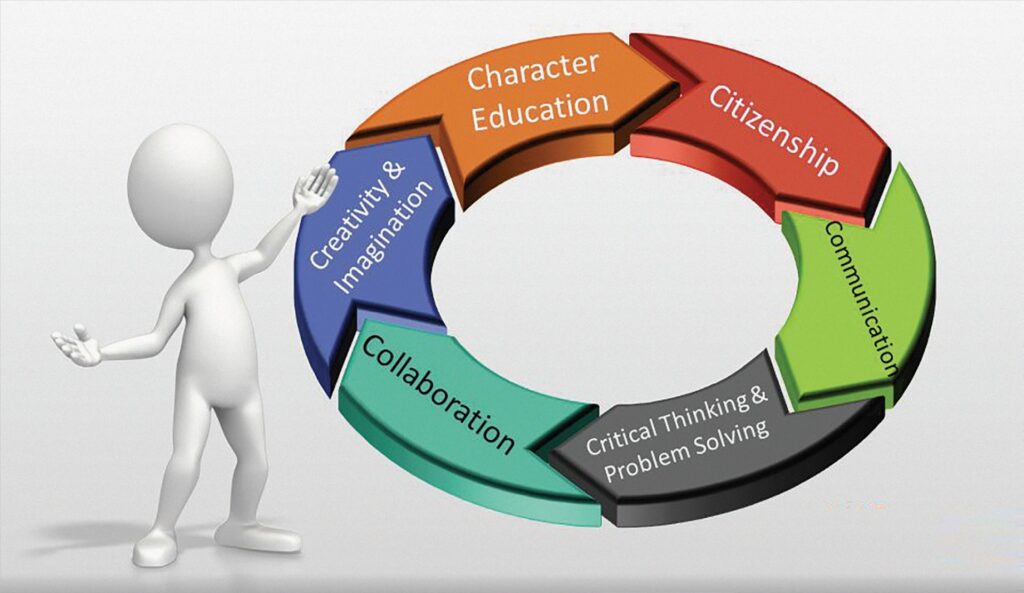
Recently, I had the opportunity to serve on an interview panel facilitating recruitment process of fresh graduates for a bank — a role I’ve embraced many times over the years. Yet this time, something felt remarkably different. The young candidates who sat across me weren’t simply seeking employment; they radiated a compelling clarity about their career goals, personal values, and the kind of organisational culture they desired. They came prepared not only to answer our questions but brought along many questions of their own. Their questions went far beyond salary and benefits. They probed into learning opportunities, growth, inclusivity, and work-life balance. Their focus wasn’t just on “What will I do?” but “Who will I become if I work here?”
What struck me most was the number of candidates who appeared to already function from the top of Maslow’s hierarchy – “self-actualisation”. This was once considered a distant professional milestone, pursued only after securing job stability, long awaited organic upgradations, and years of loyal service. But for this generation, meaning, purpose, autonomy, and impact are the starting points. It made me reflect deeply on how profoundly workplace cultures and generational values have shifted – and how essential it is for organisations to adapt to this transformation if they are to remain relevant and effective.
 A Shift Beyond Culture: The Evolution of Professional Purpose
A Shift Beyond Culture: The Evolution of Professional Purpose
Having worked in Nepal’s banking sector since 2008, I have personally witnessed the paradigm shift that now defines the workplace. Back then, stability and hierarchy were the cornerstones of the professional environment. The industry was led predominantly by senior professionals from earlier generation who valued loyalty, positional authority, and structured communication. Hierarchy determined influence, and long tenure was synonymous with trust and power.
However, the workforce scenario began to change gradually with the entry of younger professionals – many of who returned with international degrees, exposure to global work cultures through experience or media and an entirely different mindset. These employees brought with them digital fluency, an appetite for accelerated progress, and a drive to align their personal and professional purposes simultaneously. The generational gap, once a quiet undercurrent, became a prominent force reshaping the traditional workplace. A structure once defined by rigidity began to open up – to innovation, transparency, flatter hierarchies and more welcoming board room to new generations.
In organisations that embraced this shift, we saw a rise in articulated effort, openness and collaboration. However, in many cases, resistance from senior leadership – still deeply rooted in conventional management styles – led to friction. Talented young professionals leave organisations not for better pay, but for environments that honoured their sense of purpose and autonomy. Flexible work proposals were dismissed as indulgences, and digital tools were met with scepticism.
The Generational Challenge: Not Just Age, But Ideology
What we are seeing is not merely a gap in age – it is a gap in ideology, identity, and purpose. Where older generations often tied their achievements to their roles and titles, younger employees see their job as one component of a broader life mission. For them, the workplace is a space not just to earn but to also a platform to learn, grow, express, and contribute.
When generational misalignment is ignored, it creates talent drain, dampens innovation, and breeds disengagement. But when acknowledged, respected, and managed strategically, it becomes an enormous opportunity to harness diverse strengths.
To navigate this evolving landscape, it is crucial for leaders, particularly in sectors like banking and long-standing multigenerational organisations that have long operated in traditional ways, to not only tolerate but actively engage with generational differences. This engagement must move beyond surface-level gestures and evolve into systemic redesigns of HR policies, management styles, and leadership development strategies and simultaneously changes in regulatory compliance requirement should be done allowing organisations to evolve in re-shaping their system and practices.
Bridging the Divide: Strategies for Transformational Inclusion
Nepali organisations – particularly in banking and service industries – must rethink their frameworks to align with evolving workforce expectations. Some actionable strategies include:
1. Cross-Generational Dialogues and Mentorship Programmes
Design structured platforms where knowledge flows in both directions. Senior professionals bring experience and institutional memory; younger employees contribute agility, tech-savviness, and new perspectives. Formal mentorship programmes, intergenerational task forces, and storytelling forums can foster respect and cooperation. These initiatives also enhance psychological safety – a crucial ingredient for innovation.
2. Flexible and Non-Linear Career Paths
The traditional ‘climb-the-ladder’ model does not resonate with everyone anymore. Instead, allow for internal mobility, skill exploration, career breaks, and lateral moves. This flexibility acknowledges that growth isn’t always vertical – it can also be expansive and experimental.
3. Leadership Grounded in Emotional Intelligence
Leadership development must prioritise emotional agility, inclusive decision-making, and ethical grounding. Today’s leader is not just a commander but a coach, mentor and facilitator of culture. Emotional intelligence is no longer a soft skill – it is a strategic necessity.
4. Customised Motivation and Recognition Systems
One-size-fits-all policies are outdated. Different generations are driven by different values – some seek recognition and purpose, others stability or autonomy. Tailor rewards, roles, and responsibilities accordingly to enhance engagement.
5. Redesign of HR Policies Around Flexibility
Post-pandemic realities have proven that flexibility doesn’t compromise productivity. HR must integrate remote work options, flexible hours, and outcome-based performance evaluations. Recognition mechanisms, well-being initiatives, and upskilling platforms should be personalised and inclusive along with changes in regulatory frameworks.
6. Cultivating a Learning Ecosystem Across Ages
Encourage employees across generations to upskill and reskill. Older employees must feel empowered to learn, and younger ones must respect experience. Innovation is not age- bound; it thrives in a culture that honours both curiosity and wisdom.
Technology and Humanity: A Dual Intelligence Future
No dissertation on workforce evolution is complete without addressing Artificial Intelligence. In recent years, Nepal’s banking sector has rapidly integrated AI into customer service, fraud detection, credit scoring, and risk management. AI-driven mobile banking apps, and data analytics tools are transforming service delivery and drastically reducing turnaround times.
However, while AI drives efficiency, it cannot replicate human empathy, distinct core values, and contextual judgement. A powerful insight from a recent career coaching session still echoes in my mind: “AI should stand not just for Artificial Intelligence but also Awareness Intelligence.”
Artificial Intelligence represents automation, speed, and scalability. Awareness Intelligence symbolises empathy, ethical grounding, the human touch and contextual judgement.
In reality, the success of the future workplace lies in harmonising these two intelligences. While younger employees might excel in adopting and optimising digital tools, seasoned professionals bring relational insight, community understanding, and a well-weighted decision-making ability – especially in the local banking context where trust, familiarity and personalised customer-centric approach are imperative for success and sustainability.
Rather than fearing AI as a threat to human jobs, we must embrace it as a catalyst for human value – enabling humans to do what machines cannot.
Toward a Harmonised Future: Beyond Generations
The success of Nepali organisations, especially in sectors such as banking and other service sectors, will not depend solely on the dominance of any one generation, but on the collaboration between them. This era demands not generational competition, but convergence – where legacy meets innovation, and tradition meets transformation.
The youth bring speed; elders bring direction. One offers hustle, the other stability. Together, they can co-create workspaces that are inclusive, adaptable, progressive and resilient.
As we move forward, it is crucial to embed these principles both in policy and in practice, ensuring that workplaces are designed not just for productivity but for purpose, inclusion, and futuristic readiness.
Disclaimer:
The reflections shared in this article are my personal perspectives shaped by professional experiences in Nepal’s evolving workplace landscape. I write this with both hope and a tinge of sadness – hope in the potential of our emerging workforce, and sadness that the generational, geographical, and ideological divides too often go unrecognised or unaddressed. It is important to note that the new generation referenced here does not represent all Millennials or Gen Z individuals in Nepal, as there are vast differences in lifestyle, struggles, and aspirations between those from urban and rural areas highlighting the pertinent need to ‘bridge the gap’ for our socio- economical welfare.
(Shrestha is Strategic Human Resources Consultant)



